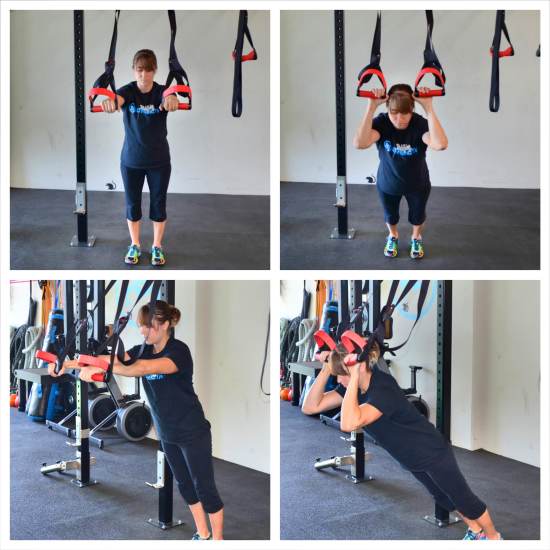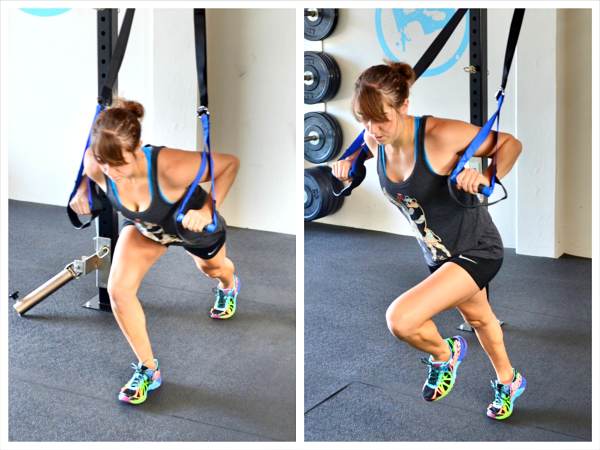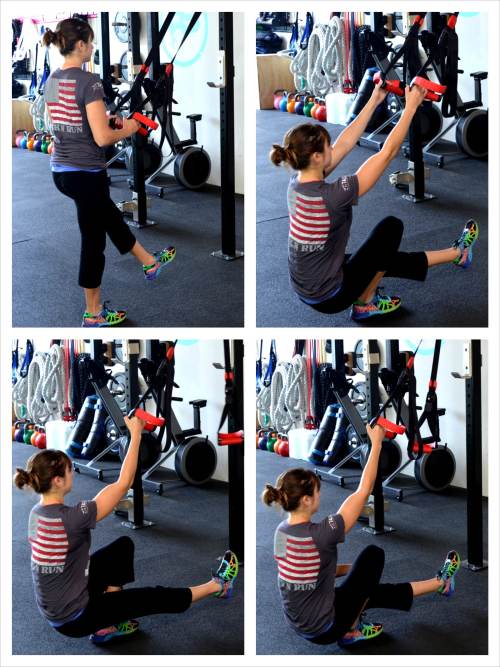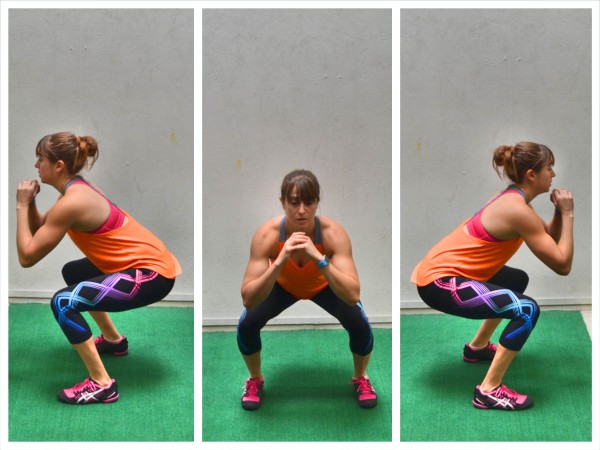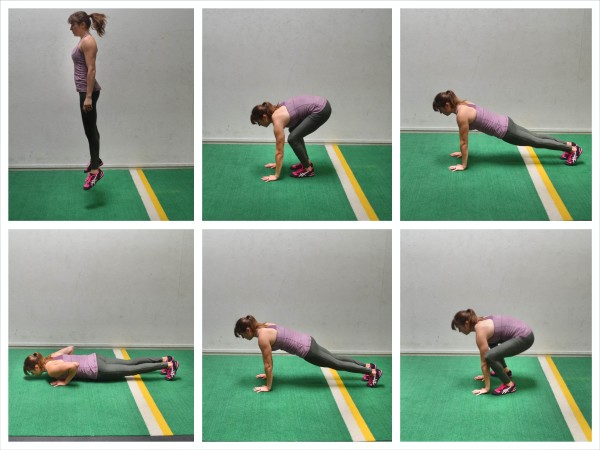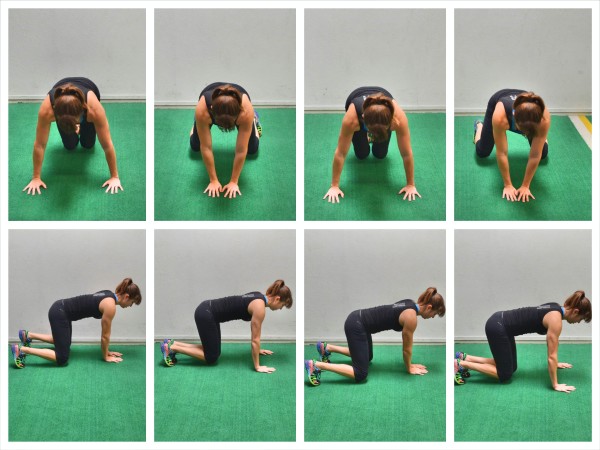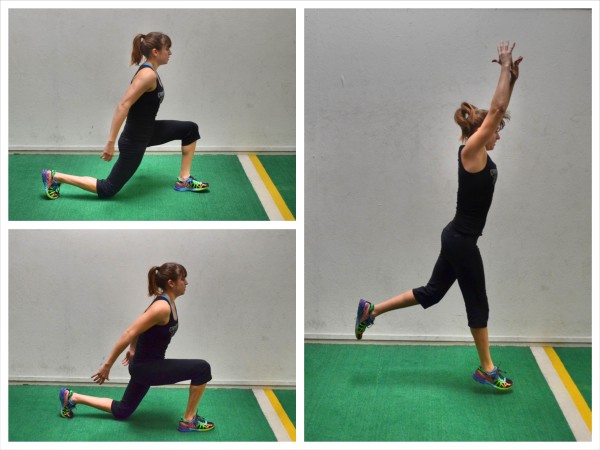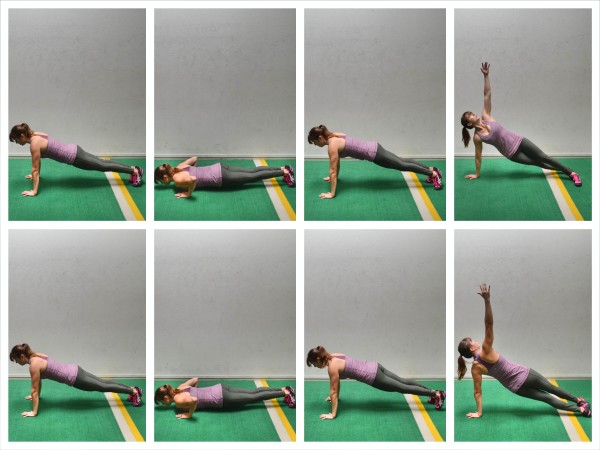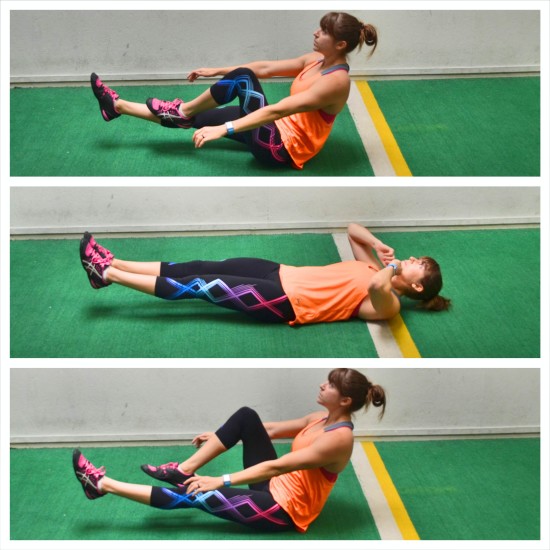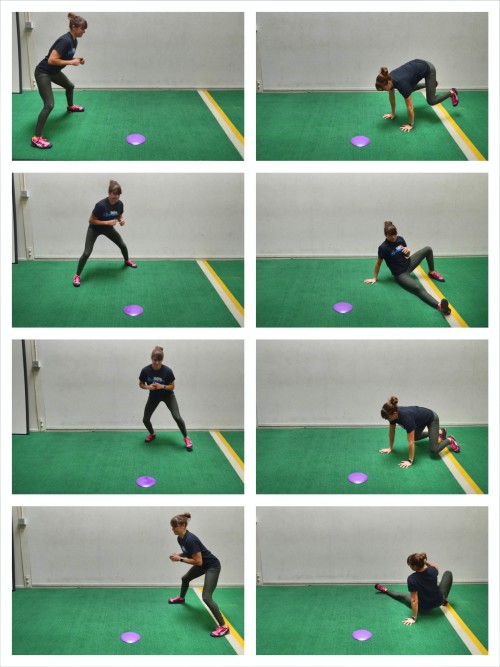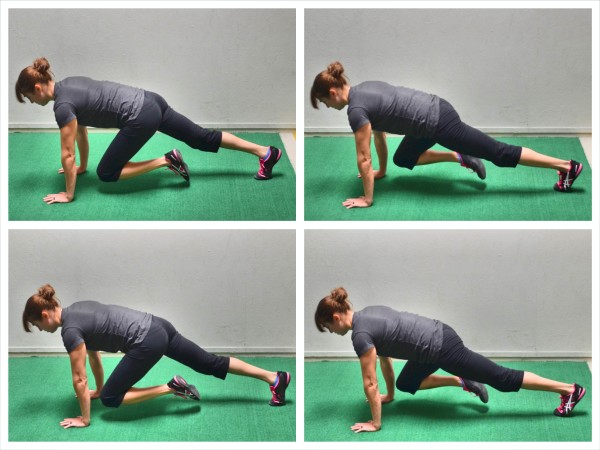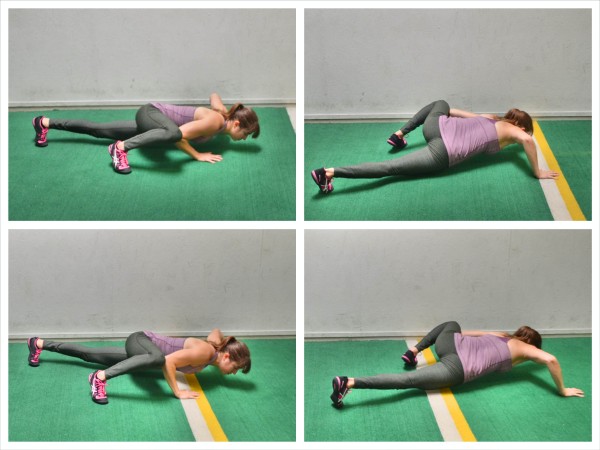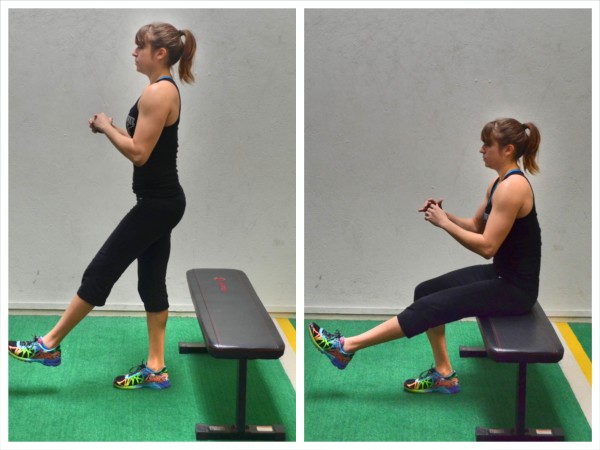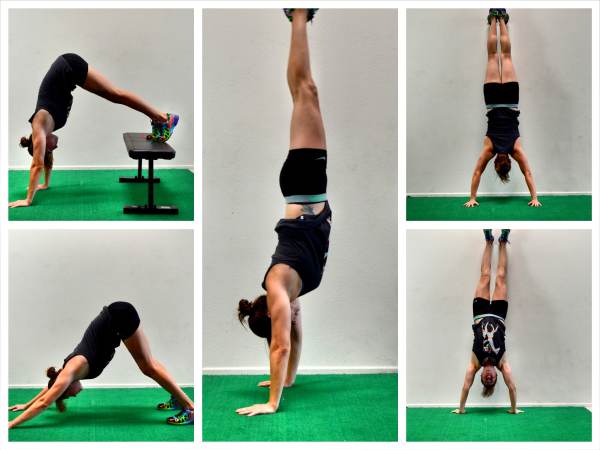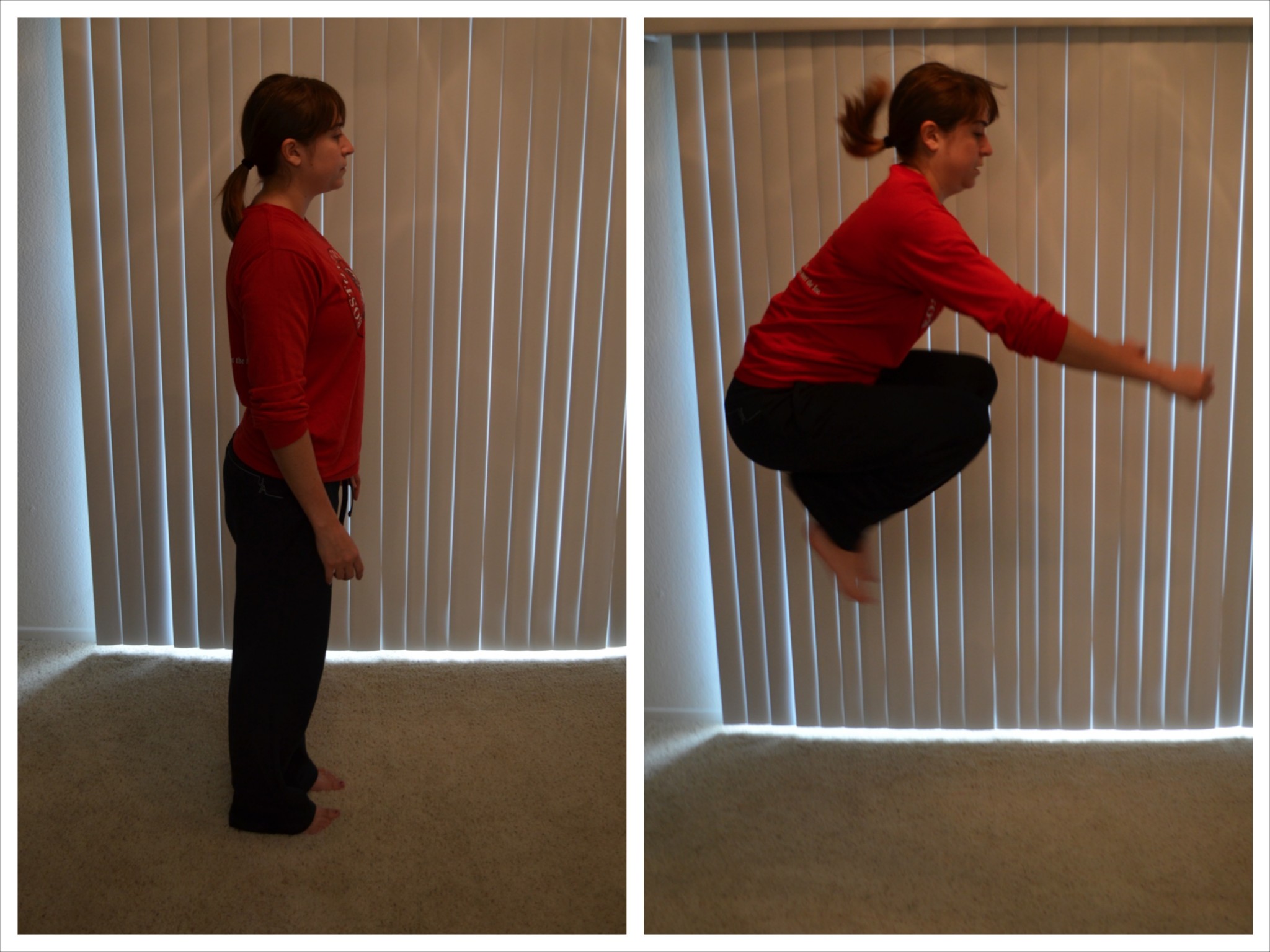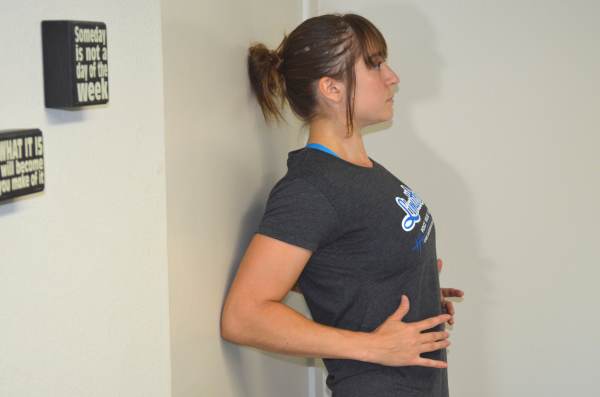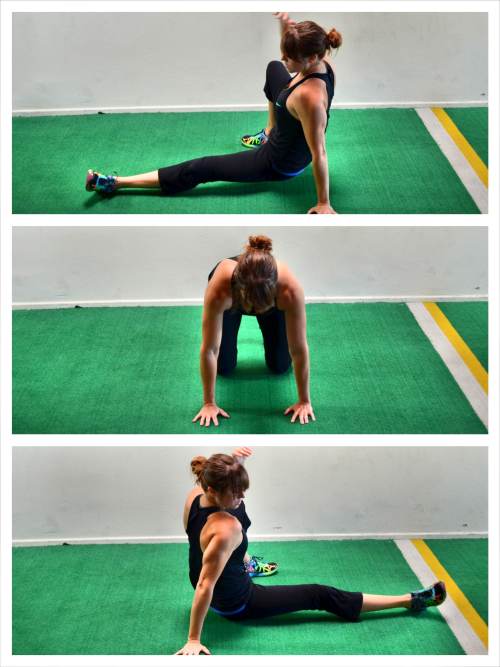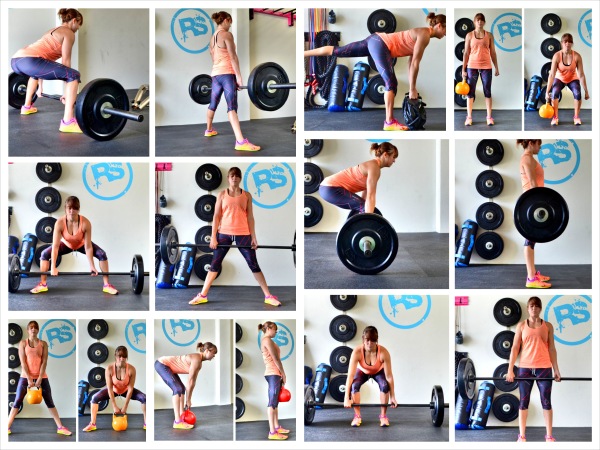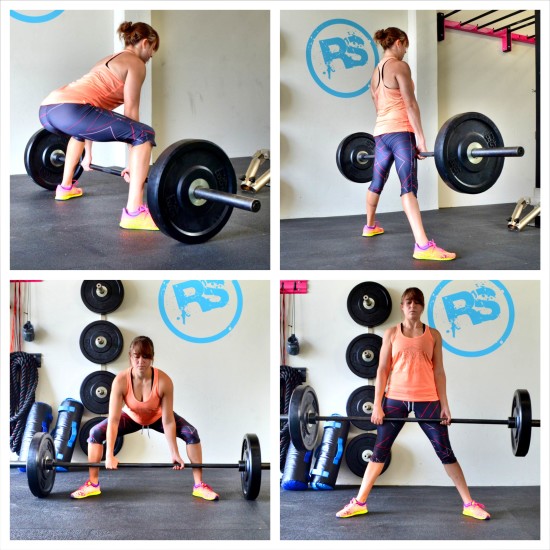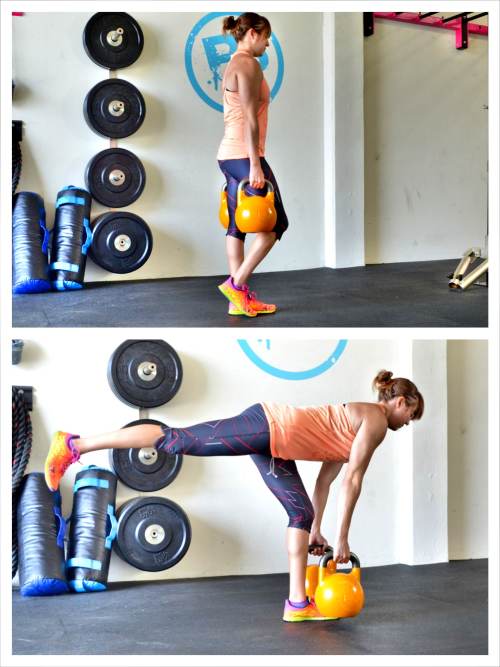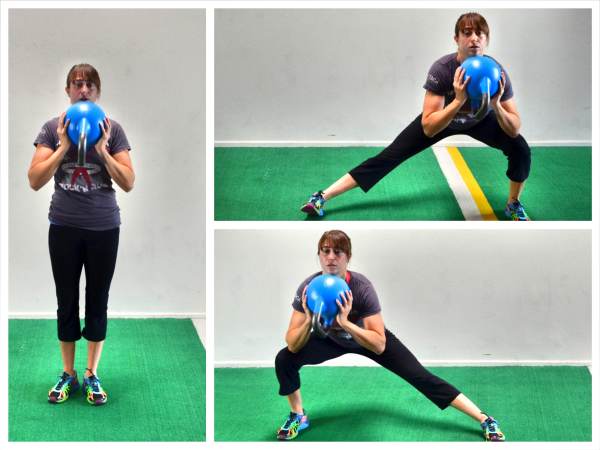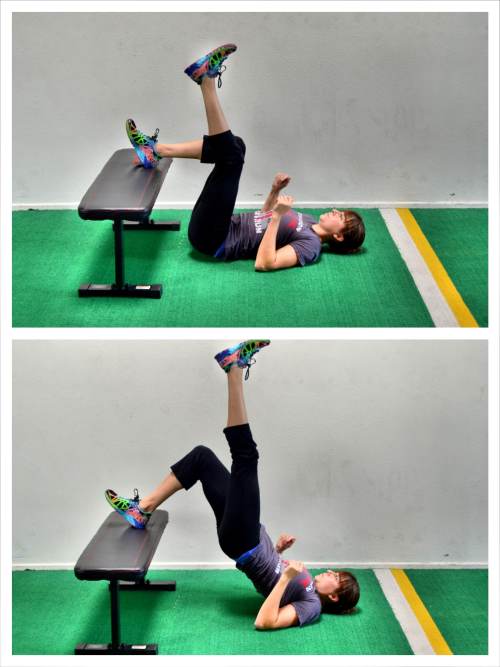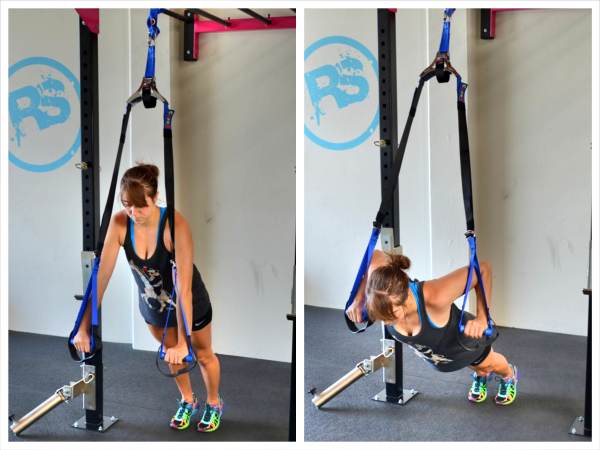
Upper Body Suspension Trainer Workout
WARM UP
Stretch and Roll Out:
Wrists/Forearms
Chest
Shoulders
Back
Lats
WORKOUT
Complete 3-5 rounds of each of the following circuits. Rest no more than a minute between rounds and 1-2 minutes between circuits.
CIRCUIT #1:
8-15 reps Inverted Row
8-15 reps Back Fly
8-15 reps Curl
CIRCUIT #2:
8-15 reps Push Up
8-15 reps Chest Flyes
8-15 reps Tricep Extension
COOL DOWN
Stretch and Roll Out:
Wrists/Forearms
Chest
Shoulders
Back
Lats
NOTES:
Exercisers of all levels should be able to do these moves with the suspension trainer. No weights should be needed. You can also turn these two circuits into 15 minute density sets. If you do, make sure you really focus on getting as much volume, as many reps and rounds as possible, done in the 15 minutes.
EXERCISE DESCRIPTIONS:
Inverted Row – Hold a suspension trainer strap in each hand. Walk your feet out so you are leaning back. The closer to parallel to the ground you get, the harder the move will be. Squeeze your core and glutes and press your chest out so there is tension between your shoulder blades. Then row up, keeping your body in a nice straight line. Row until your chest comes up to the handles and then lower yourself back down. Don’t let your hips sink as you lower back down. Also, keep your chest pressed out the entire time (do not let your low back arch though).If there is no bar or XT/TRX on which to do rows, do scapular push ups or corner rows.
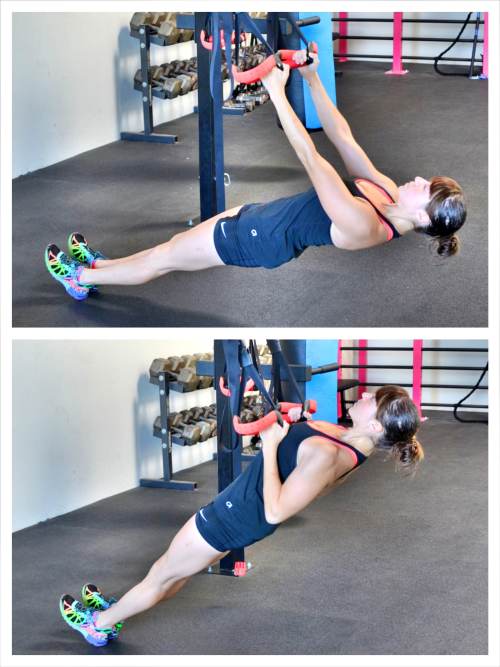
Back Fly – Hold a suspension trainer strap in each hand. Walk your feet out so you are leaning back. The closer to parallel to the ground you get, the harder the move will be. To start, do not walk out as much as you would for the inverted row. Lean back with your arms out straight in front of you and your body in a nice straight line. Do not let your hips sink toward the ground or your back arch. Then, keeping your arms straight, pull the straps open. Open your arms out to the side at shoulder height. Do not shrug your shoulders as you pull your arms open. Make sure your body stays in a nice straight line as you pull yourself up by opening your arms. Then slowly bring your arms back together and lower yourself down. Then pull your arms open again and repeat the fly.
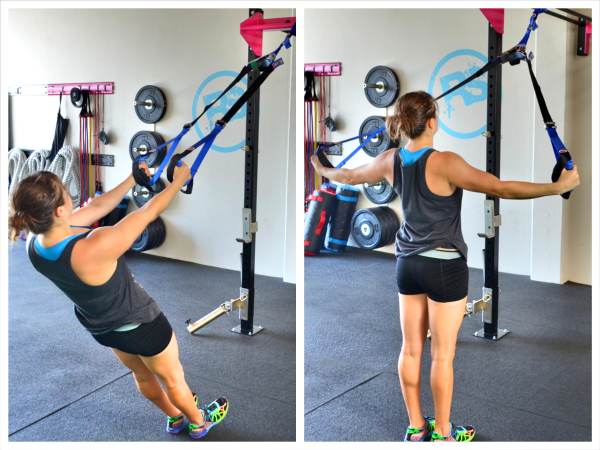
Curl – Hold a suspension trainer strap in each hand with your palms facing you. Walk your feet out so you are leaning back. The closer to parallel to the ground you get, the harder the move will be. To start, do not walk out as much as you would for the inverted row. Lean back with your arms out straight in front of you and your body in a nice straight line. Do not let your hips sink toward the ground or your back arch. Then, keeping your elbows at shoulder height, curl your hands in toward your forehead. As you curl your arms make sure your body stays in a nice straight line. Then slowly uncurl your arms, keeping your upper arms in the same place. Once your arms are straight, curl your hands back in. Do not let your hips sag or your back arch as you curl.
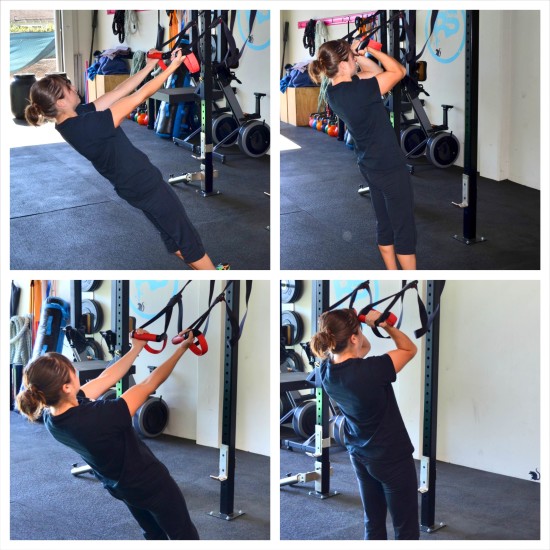
Push Up – Stand facing away from the suspension trainer anchor point with a hand in each strap. Walk your feet back so your body is at an incline. The closer to parallel to the ground you get, the harder the move will be. Set up with your arms out straight in front of you in line with your shoulders and your feet together. Then, keeping your body in a nice straight line, lower your chest down between your hands. Keep your elbows from flaring up by your shoulders. You want your arms to create an arrow shape with your body. Then press back up. Keep your core tight as you lower down and press back up. Make sure your hands stay right outside your chest and don’t spread out wider than your shoulders.

Chest Flyes – Stand facing away from the suspension trainer anchor point with a hand in each strap. Walk your feet back so your body is at an incline. The closer to parallel to the ground you get, the harder the move will be. Set up with your arms out straight in front of you in line with your shoulders and your feet together. Then, keeping your body in a nice straight line, let your arms open up. Your arms should be only slightly bent so that your elbows aren’t locked out. Open your arms out to the sides without letting them bend more. Do not let your arms flare up above your shoulders as you open them. Drop your chest in between your open arms and then pull your arms back together and move back to the top of the fly.
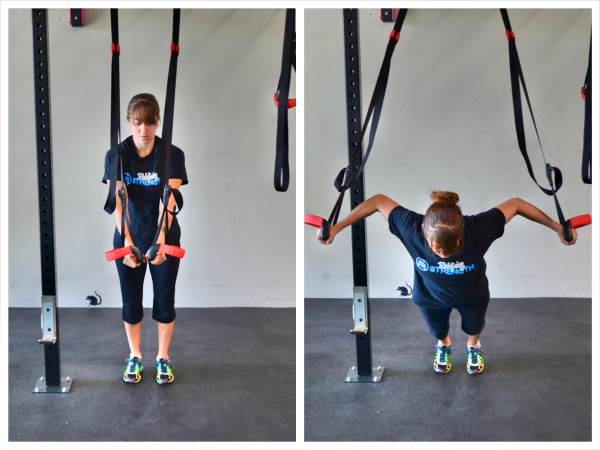
Tricep Extension – Stand facing away from the suspension trainer anchor point with a hand in each strap and your palms facing away from you. Walk your feet back so your body is at an incline. The closer to parallel to the ground you get, the harder the move will be. Set up with your arms out straight in front of you in line with your shoulders and your feet together. Then, keeping your body in a nice straight line and your upper arms in line with your shoulders, curl the backs of your hands back toward your forehead. Do not let your hips sag down toward the ground as you curl your hands back. Then press your hands back out until your arms are fully extended again at shoulder height. As you press your hands back out, you will press your body away. Curl and press away in a slow and control manner. You should not feel this move in your low back. Just make sure you keep your core engaged.
